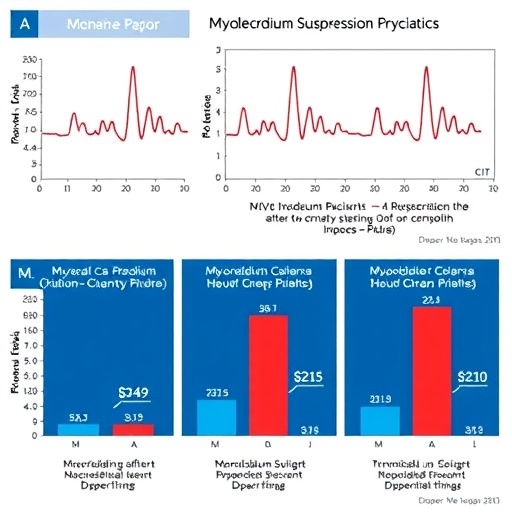In a groundbreaking study published in the journal Gene Therapy, a team of researchers led by Maria Stamataki has unveiled a novel approach to enhancing gene therapy targeting human vascular endothelial cells. This innovative research focuses on the identification of adeno-associated virus (AAV) variants that exhibit significantly improved transduction capabilities. The implications of this work could be transformative for the field of gene therapy, especially in the treatment of vascular diseases.
The study arose from a fundamental understanding of AAV’s role as a vector in gene therapy. AAVs are known for their safety profile and low immunogenicity, making them appealing candidates for delivering therapeutic genes to target tissues. However, achieving efficient transduction—essentially getting the therapeutic gene into the cells—remains a primary challenge. The research highlights how optimizing AAV capsid proteins can lead to better cell targeting, which is crucial for effective treatments.
Using a sophisticated screening process, the researchers analyzed a comprehensive library of AAV capsid variants in non-human primates to identify those with enhanced transduction efficiency in human vascular endothelial cells. This approach not only underscores the importance of animal models in preclinical research but also illustrates how AAV capsids can be engineered for specific applications. By exploiting the natural tropism of AAVs and modifying their structure, the researchers could improve their ability to penetrate the endothelial barrier effectively.
In the study, several AAV variants were identified that outperformed traditional AAV serotypes in transducing vascular endothelial cells. This was a pivotal finding, as endothelial cells line blood vessels and play a significant role in various physiological and pathological processes. By efficiently delivering genes to these cells, the modified AAVs could potentially allow for new therapeutic strategies targeting diseases such as atherosclerosis, thrombosis, and other cardiovascular conditions.
The researchers employed a cutting-edge next-generation sequencing technique to ascertain which AAV capsids displayed the best performance in vivo. By treating non-human primate models with different AAV variants, the study could measure not only transduction efficiency but also specificity and safety profile. The results were promising; certain variants achieved over ten times more transgene expression compared to existing AAV serotypes.
Moreover, the team conducted extensive dose-response studies to determine the optimal viral load necessary for effective transduction while minimizing potential side effects. The quantitative analysis provided a detailed understanding of the interaction dynamics between the AAV variants and human endothelial cells. This research thus paves the way for more targeted and less invasive gene therapy strategies.
Understanding the implications of this research extends beyond immediate therapeutic applications. The findings may also lead to new insights into the biology of vascular tissues and their responses to gene therapy. With cardiovascular diseases on the rise globally, the urgency for effective treatment options has never been greater. This research fills a crucial gap, exploring how tailored AAV vectors can elicit a robust and sustained therapeutic response without triggering adverse immune reactions.
As the research evolves, the potential for clinical application becomes increasingly tangible. The next steps will involve rigorous testing of these AAV variants in larger animal models and eventually in human clinical trials. It is essential to ascertain the long-term safety and efficacy of these modified vectors, ensuring that they can provide reliable solutions to patients lacking effective treatment for their vascular diseases.
Furthermore, the technology could also extend beyond vascular applications. By refining AAV capsid engineering, researchers could explore therapies for a variety of conditions across multiple organ systems. This versatility is one of the key attributes of AAVs, making them invaluable tools in the arsenal of gene therapy.
In conclusion, the study by Stamataki and colleagues marks a significant advancement in the quest for more effective AAV-based gene therapies targeting vascular endothelial cells. By harnessing the unique properties of AAVs and manipulating their capsid proteins, they have opened new avenues for the development of targeted therapies that could address serious vascular conditions. This critical step highlights the synergy between innovative science and potential clinical application, heralding a new era in the treatment of diseases that have, until now, posed substantial challenges.
As the research progresses towards clinical application, the scientific community eagerly anticipates further developments in this promising field, which may redefine how genetic disorders and vascular diseases are treated in the near future. The possibilities are boundless as the groundwork is laid for a future where gene therapy can effectively combat some of the most challenging health issues faced by society.
Subject of Research: Gene therapy using AAV variants targeting human vascular endothelial cells.
Article Title: Identification of AAV variants with improved transduction of human vascular endothelial cells by screening AAV capsid libraries in non-human primates.
Article References:
Stamataki, M., Lüschow, J., Schlumbohm, C. et al. Identification of AAV variants with improved transduction of human vascular endothelial cells by screening AAV capsid libraries in non-human primates. Gene Ther 32, 529–541 (2025). https://doi.org/10.1038/s41434-025-00563-4
Image Credits: AI Generated
DOI: 22 August 2025
Keywords: Gene therapy, AAV variants, vascular endothelial cells, transduction efficiency, capsid engineering, cardiovascular diseases.
Tags: AAV variant discoveryadeno-associated virus transductionanimal models in gene therapy researchefficient gene delivery methodsengineering AAV capsids for therapygene therapy targeting vascular endothelial cellsimproving transduction efficiency in humanslow immunogenicity in gene therapyoptimizing AAV capsid proteinssafety profile of AAV vectorstransformative implications for vascular medicine.vascular disease treatment advancements





